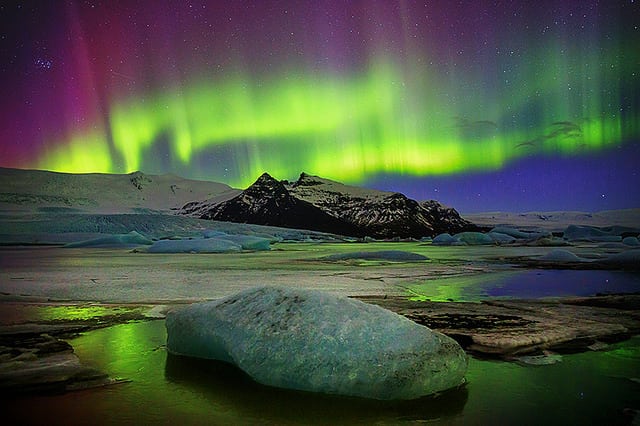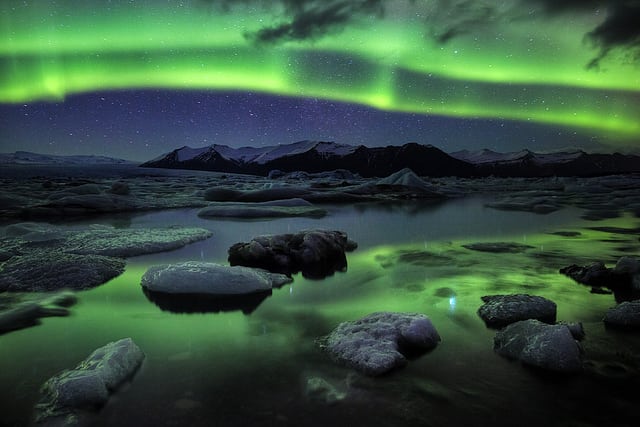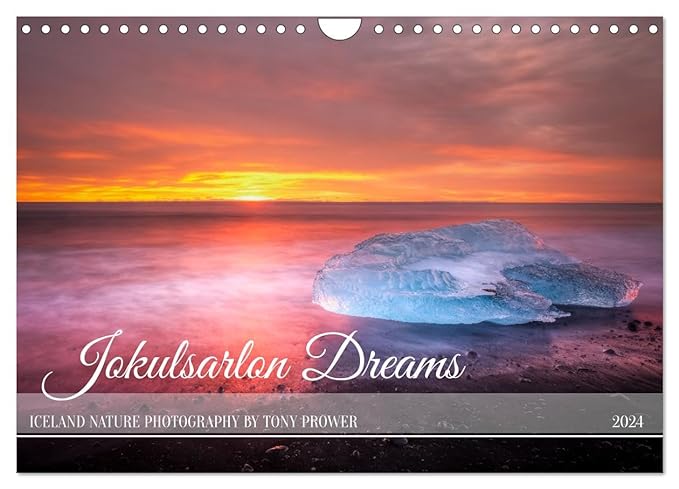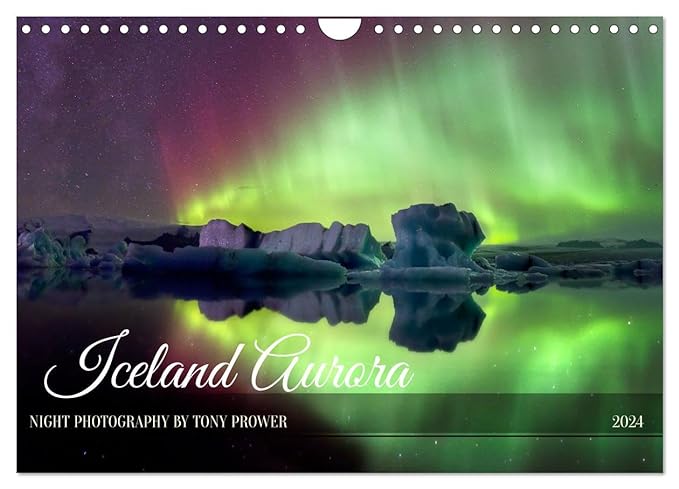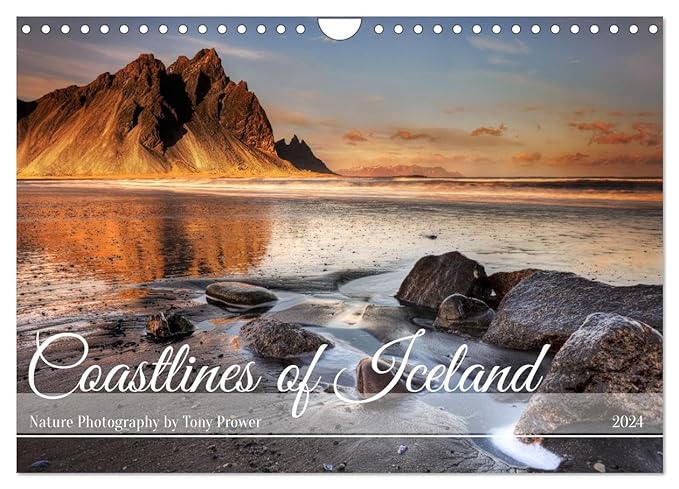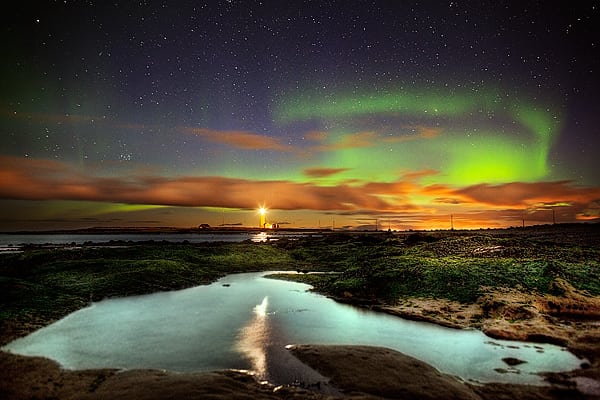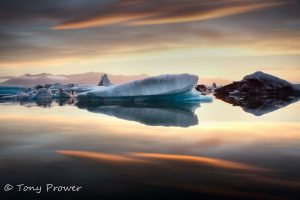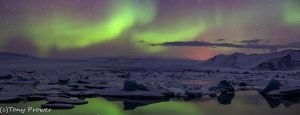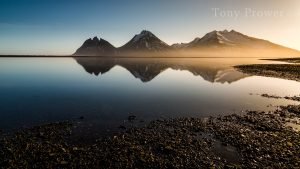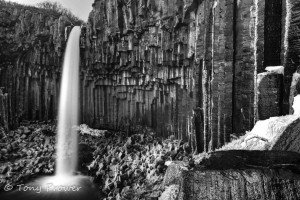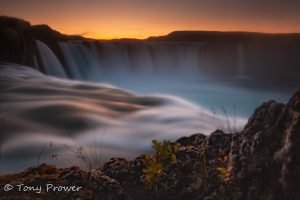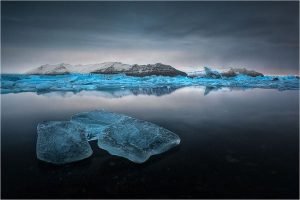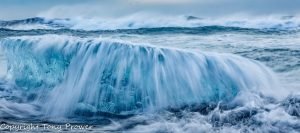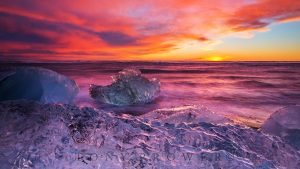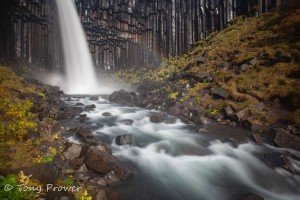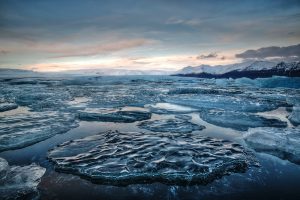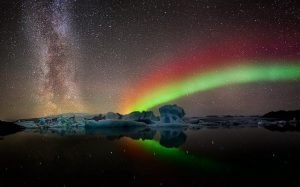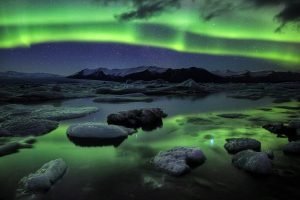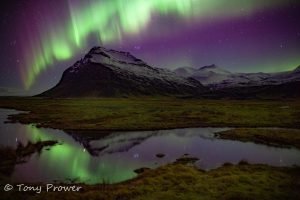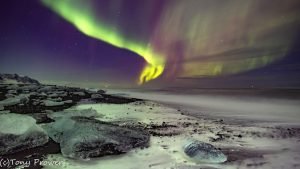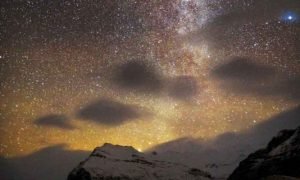Night Composition
Northern Lights photography is mostly about the sky, but can we also make it part of a Landscape composition. The Northern lights in Iceland can yield wonderful displays for your camera, but if you can include some of the landscape you are standing in at the time, it will give your picture a dynamic edge. Getting a well exposed landscape and sky requires some skills beyond night photography basics. DOF (depth of field) is an obvious obstacle because we typically use and aperture like f/2.8 to let enough light onto the sensor. Composition is a challenge, trying to see the foreground in the dark. Lastly, exposure is an issue, because the exposure times needed to record a foreground in the dark are very long. If you don’t expose them well, you will suffer camera noise.
Foreground or no foreground?
Aperture limits
Daytime landscape photographers will swear by f/11 or f/14 to achieve good depth of field in a Daytime landscape image. This will enable the photographer to work with the Hyper-focal distance and achieve sharpness from front to back. If you decided to pay with these apertures during the night, it would most likely be day break by the time you have exposed a successful foreground. The other issue you would have is that any Aurora will be smoothed out and stars will have long trails. Sensor noise could become and issue, even in cold climates.
How to photograph Northern Lights
So, we have to compromise at night. We need to stick to the wide apertures for the sake of the sky (and perhaps our time). The image above was shot with a 24mm at f/4. As you can see, the stars are sharp and the foreground is not too bad (at least it is acceptable for the web). Is this the sort of DOF you would expect from f/4? Well focal length is just as important in DOF as aperture. Wider lenses have greater DOF at f/4. If you choose wider than 24mm, you should just be able to achieve a landscape style DOF at f/4 aperture.
Here is another f/4 shot.
Are you surprised to see such good DOF at f/4 (this is a single shot)?
As you know, 24mm is my preferred focal length, but consider the DOF at f/4 you could get with even more wide angle. Nikon’s 14-24mm is a favourite with Aurora photographers because it is super sharp and you can go really wide with it. Also, because Northern light photography requires “No Filters”, the 14-24mm is a very good choice for night shooting. Apparently this works even better on a Canon, the adaptor ring improves the sharpness.
Night Vision
The single most important thing about composing at night is to care for your eyes. Practice allowing them to work in the dark. Apart from the obvious safety issues, I always encourage my students to work without flash lights. In a group of photographers, the one with the flash light operating while everyone else is exposing is going to become unpopular quickly. It is fine to use a light to travel safely, but once you are in position, turn that light off. Then use the light from my mobile phone (or very weak light) if I need to make adjustments to the camera and lens. If you work like this, you will begin to see the foreground after 10-20 mins. If you are a real pro, you will be able to see the foreground through the view finder. If you are alone, there is nothing wrong with using a light to find your foreground.
Very Long Exposure
Work to establish the best exposure for the sky. If you are familiar with the Magic Cloth, this is one of the best ways to control exposure to different parts of the scene. When you have exposed the sky, cover it and work on the foreground for 3 times the exposure again. For example, if your sky is exposed in 20 second, use the cloth to work the foreground for a further 60 seconds to expose the foreground. These figures are a starting point and might need adjustment depending on conditions.
If you are going to try a night HDR or exposure blending, I would suggest going one step further and make it a focus stacked HDR. I might suggest exposing the sky with a well focused f/2.8 and then bringing the focus nearer and using f/4 for the foreground exposure.
